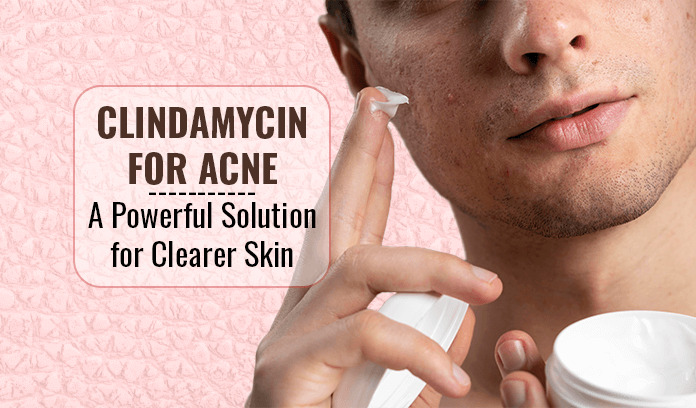While many of us affected by the frustrating condition of acne try our best to resolve skin woes through natural remedies, there are certain medications and pharmaceutical options that help address the issue lying deep beneath the surface.
Fortunately, there are several effective treatments available, and one of them is Clindamycin. In this article, we’ll explore how Clindamycin can help you achieve clearer skin and regain your confidence.
Understanding Acne
Before delving into the benefits of Clindamycin, it’s crucial to understand acne. Acne occurs when hair follicles become clogged with oil and dead skin cells, leading to the formation of pimples, blackheads, and whiteheads.
Acne problems can result due to various factors such as genetics, hormonal changes, and even a few skincare products.
The Role Of Clindamycin
Clindamycin for acne is an effective antibiotic, particularly when topical applications like salicylic acid or benzoyl peroxide aren’t powerful alone.
It works by reducing the number of acne-causing bacteria on the skin’s surface, thereby reducing inflammation and preventing new breakouts.
How It Works
Bacterial suppression: Clindamycin inhibits the growth of Propionibacterium acnes, a bacterium that plays a significant role in the development of acne.
By reducing the bacterial population, Clindamycin helps prevent the formation of new pimples.
Anti-inflammatory properties: Often accompanied by redness and swelling, acne can cause the skin to flare up with little to no relief. Clindamycin‘s anti-inflammatory properties help soothe the skin by providing relief and enhancing the skin’s overall appearance.
Complementary treatment: Clindamycin can be used in combination with other acne treatments, such as retinoids or benzoyl peroxide, for improved results. This approach is especially beneficial for individuals with moderate to severe acne.
Applications And Precautions
Clindamycin for acne is available in various forms, such as gels, lotions, and creams. To ensure the best possible results, adhere to your healthcare provider’s guidelines carefully. Apply a thin layer to the affected areas once or twice daily, depending on your prescription.
It’s essential to note that like any medication, Clindamycin may have side effects, including skin dryness or irritation. Therefore, it is of utmost importance to consult your dermatologist before trying out a new product or acne treatment, in light of any preexisting medical allergies.
Conclusion
This antibiotic’s ability to reduce acne-causing bacteria and inflammation makes it a valuable addition to your skincare routine.
As individual results may vary, consult with a healthcare professional to determine the best treatment plan for your unique skin needs. Say goodbye to acne and hello to renewed confidence with Clindamycin!











